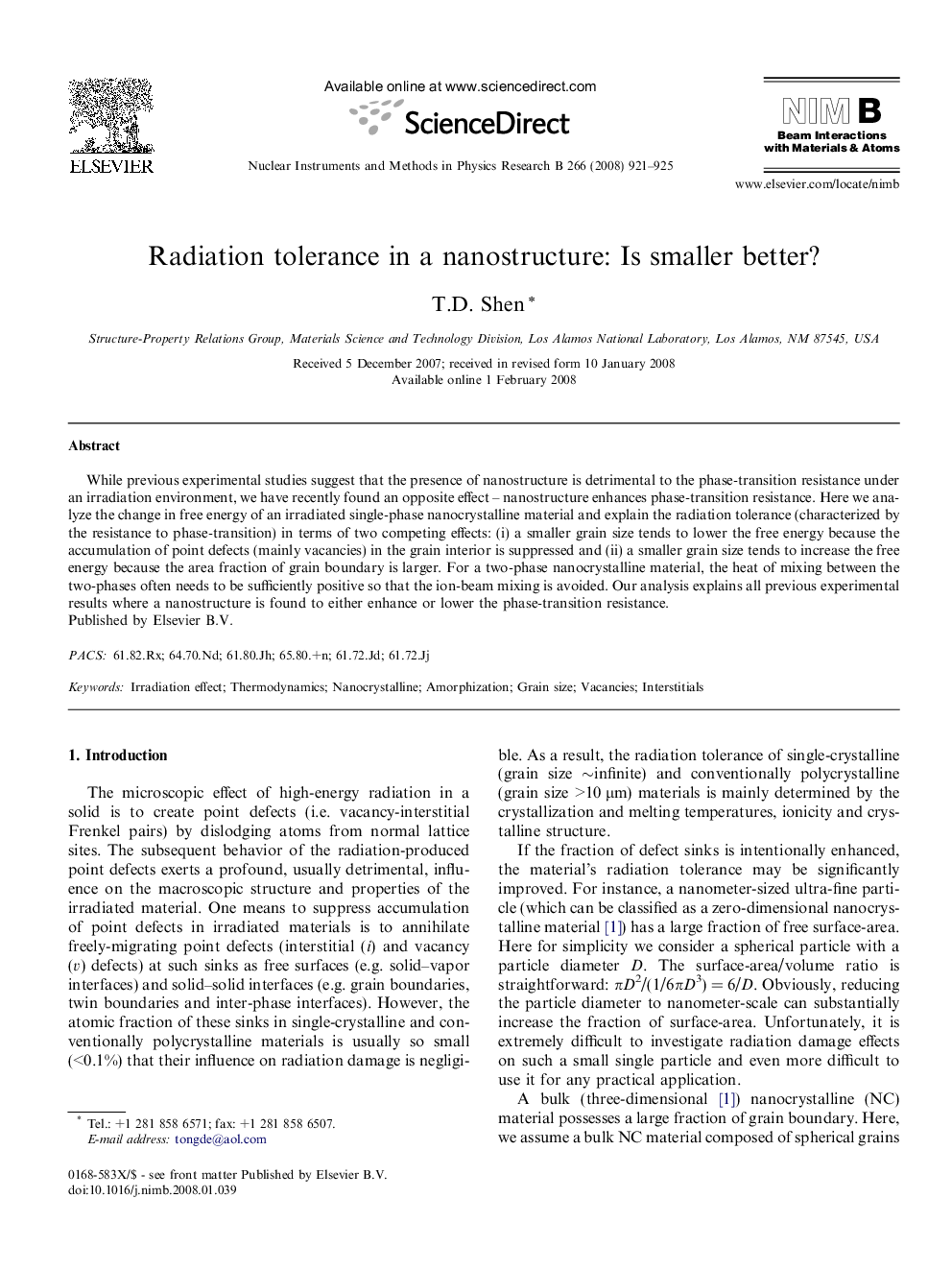| Article ID | Journal | Published Year | Pages | File Type |
|---|---|---|---|---|
| 1683243 | Nuclear Instruments and Methods in Physics Research Section B: Beam Interactions with Materials and Atoms | 2008 | 5 Pages |
While previous experimental studies suggest that the presence of nanostructure is detrimental to the phase-transition resistance under an irradiation environment, we have recently found an opposite effect – nanostructure enhances phase-transition resistance. Here we analyze the change in free energy of an irradiated single-phase nanocrystalline material and explain the radiation tolerance (characterized by the resistance to phase-transition) in terms of two competing effects: (i) a smaller grain size tends to lower the free energy because the accumulation of point defects (mainly vacancies) in the grain interior is suppressed and (ii) a smaller grain size tends to increase the free energy because the area fraction of grain boundary is larger. For a two-phase nanocrystalline material, the heat of mixing between the two-phases often needs to be sufficiently positive so that the ion-beam mixing is avoided. Our analysis explains all previous experimental results where a nanostructure is found to either enhance or lower the phase-transition resistance.
